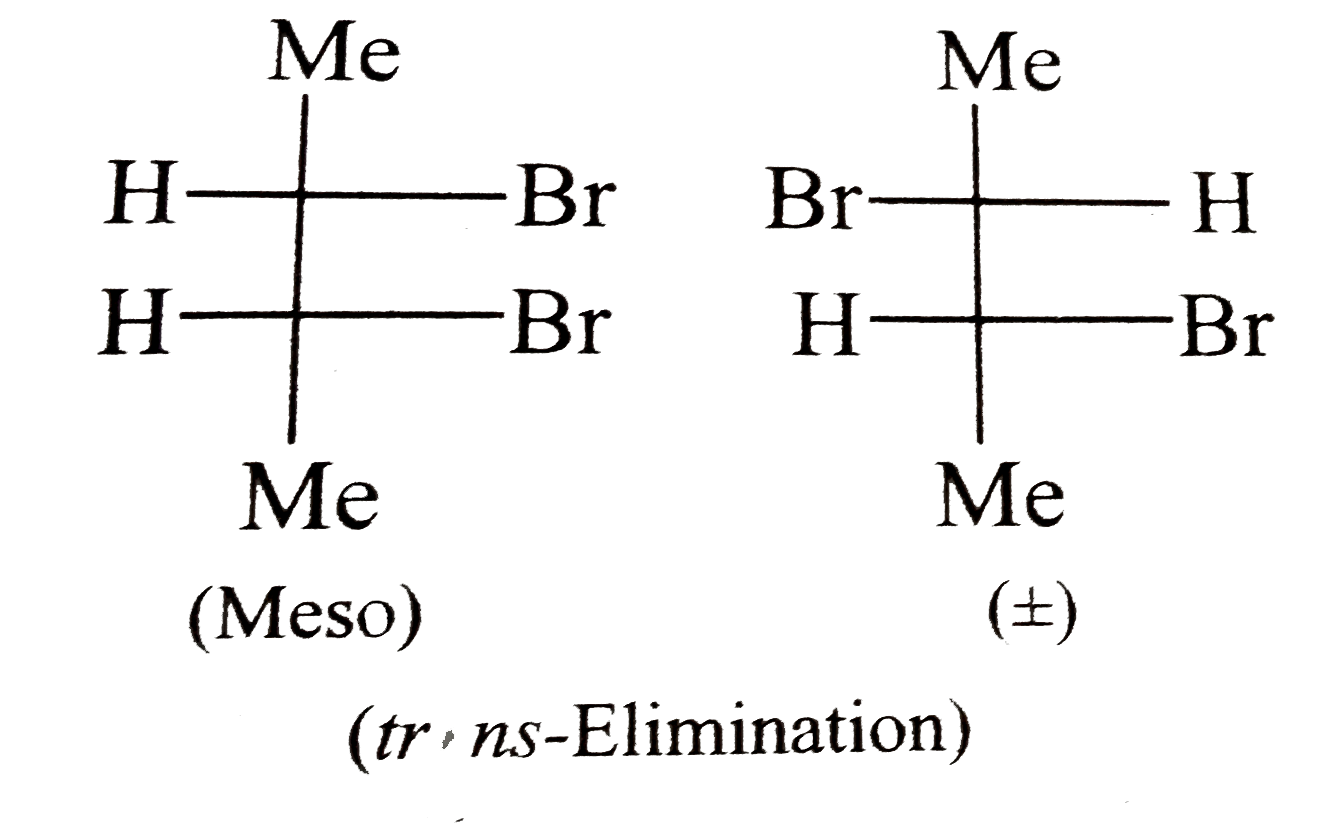During debromination of meso-2,3-dibromobutane, with Zn dust/CH3COOh the major compound formed is-
n-butane
1-butane
cis-2-butane
trans-2-butane
The correct Answer is:C
To solve the question regarding the debromination of meso-2,3-dibromobutane with zinc dust in the presence of acetic acid (CH₃COOH), we can follow these steps:
Step 1: Understand the Structure of Meso-2,3-Dibromobutane
Meso-2,3-dibromobutane has the following structure:
BrBr∣∣∣∣CH₃−C−CH−CH₃∣∣∣∣HH
This compound has two bromine atoms attached to the second and third carbon atoms of a butane chain.
Step 2: Identify the Reaction Conditions
The reaction is carried out using zinc dust (Zn) and acetic acid (CH₃COOH). Zinc is a reducing agent that will facilitate the removal of bromine atoms (debromination) from the molecule.
Step 3: Mechanism of Debromination
During debromination, the bromine atoms will be removed, and a double bond will be formed between the second and third carbon atoms. The reaction will result in the formation of an alkene.
Step 4: Determine the Product
Since meso-2,3-dibromobutane is a symmetrical molecule, the removal of the two bromine atoms can lead to the formation of a double bond in two possible configurations: cis or trans. However, the presence of zinc dust and acetic acid favors the formation of the cis product.
The major product formed will be:
HH∣∣CH₃−C=C−CH₃
This structure corresponds to cis-2-butene.
Step 5: Conclusion
The major compound formed during the debromination of meso-2,3-dibromobutane with zinc dust and acetic acid is cis-2-butene.
---
Meso-2,3-dibromobutane has the following structure:
The reaction is carried out using zinc dust (Zn) and acetic acid (CH₃COOH). Zinc is a reducing agent that will facilitate the removal of bromine atoms (debromination) from the molecule.
During debromination, the bromine atoms will be removed, and a double bond will be formed between the second and third carbon atoms. The reaction will result in the formation of an alkene.
Since meso-2,3-dibromobutane is a symmetrical molecule, the removal of the two bromine atoms can lead to the formation of a double bond in two possible configurations: cis or trans. However, the presence of zinc dust and acetic acid favors the formation of the cis product.
The major compound formed during the debromination of meso-2,3-dibromobutane with zinc dust and acetic acid is cis-2-butene.
Topper's Solved these Questions
Similar Questions
Knowledge Check
During debromination of meso-dibromobutane, the major compound formed is
n-butane
but-1-ene
cis-but-2-ene
trans-but-2-eneAn-butaneBbut-1-eneCcis-but-2-eneDtrans-but-2-eneThe conversion of2, 3-dibromobutane to 2-butene with Zn is
ARedox reactionBα- EliminationCβ- EliminationDBoth α - elimination and redox reacitonThe name of the compound CH3−CH2COOH is
Abutanoic acidBethanoic acidCpropanoic acidDmuratic acid
Compound 'A' undergoes formation of cyanohydrin which on hydrolysis gives lactic acid [CH3CH(OH)COOH] Therefore, compound 'A' is :
View SolutionMeso− and racemic −2,3−dibromobutane on reaction with Nal in acetone give :
View SolutionIn the following questions, a statement of assertion (A) is following by a statement of reason (R )
A : Meso -2, 3 - dibromobutane on reaction with Zn/ether gives trans but -2 ene .
R : Zn/ether gives anti elimination .
View SolutionMeso-2,3-dibromobutane reacts with iodide ion more rapidly than does (±) compounds. What are the respective alkenes formed ? Explain.
 .
.
View SolutionCH2=C=O+CH_(3) COOH→'X'
 (Major product) 'Y' is
(Major product) 'Y' is
View Solution
